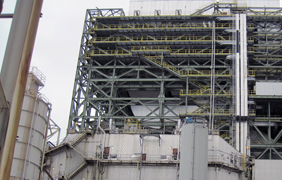How Boiler Performance Impacts Electrostatic Precipitators
The different areas of a power utility or industrial plant are sometimes operated as if they’re isolated from one another, when in fact every piece of equipment in the system eventually impacts every other piece of equipment. This article looks at some of the ways front-end operations (mills, boiler) impact the performance of electrostatic precipitators on the back end.
Flue gas volume, temperature and composition, as well as particulate size and composition, is largely determined by how well combustion equipment is operated and maintained. These two sets of factors have a direct, significant impact on a plant’s ability to comply with air pollution limits set by Federal and state regulators.
Three factors in particular are especially useful when considering the effectiveness and efficiency of air pollution control systems.
- Unburned carbon in fly ash
- High temperatures at the air heater exit and/or ESP inlet
- Air in-leakage
Unburned Carbon in Ash (Loss on Ignition, LOI)
Electrostatic precipitators (ESPs) don’t do a very good job of collecting carbon; these particles re-entrain easily because their resistivity levels are low. ESP performance starts to noticeably degrade, and stack opacity levels to rise, when the ash contains more than 10 percent unburned carbon. High carbon concentration can also cause increased sparking and reduce secondary voltage levels in the ESP.
At most plants, carbon content in ash is measured regularly. If not, it is a relatively easy matter to send ash samples from the ESP hoppers to a lab (such as Neundorfer’s) for analysis.
When coal is not pulverized properly, and/or there is poor combustion air distribution, the result is incomplete combustion and unburned carbon. Reducing unburned carbon means you are wringing more power out of the same amount of fuel. Optimizing your combustion system isn’t just about cutting emissions; it might also reduce fuel costs.
High Air Heater Exit/ESP Inlet Temperatures
The air heater is usually the last piece of equipment before a cold-side ESP. It transfers some heat from the flue gas back into the boiler system to pre-heat combustion air. This significantly reduces the temperature of flue gas heading downstream to the ESP, from about 700F to about 300F.
Flue gas temperature is critical to ESP performance; both ash resistivity and gas volume increase with higher temperatures. The optimal operating temperature for a cold-side ESP is in the 280F-320F range. Temperatures above 350F usually have a significantly negative impact on ESP performance.
At most plants, air heater exit temperature readings are readily available in the DCS.
If air heater temperatures are higher than normal, testing the combustion system is an effective way to determine why. High exit gas temperatures can be associated with excess air”indicating poor combustion control, which wastes energy and increases flue gas volume. Poor balance across the furnace is another likely cause. Mill performance, as well as ash chemistry, can alter particle size distribution, which can significantly impact ESP performance.
Combustion system testing to find the cause of high exit temperatures may be combined with checking the air heater itself to find out if flow quantities are optimal and/or if air in-leakage is a problem.
Air In-Leakage (Tramp Air)
Anything that increases the volume of gas being treated by the ESP is bad for collection efficiency. Finding air in-leakage can be complicated, since it can get into the system at many locations. If tramp air is suspected, the hunt for a source usually starts by observing oxygen (O2) meter readings.
At most plants, O2 meters are located at the economizer exit; readings from this location are used primarily for combustion control. Under normal conditions, the boiler exit meter will read around 3% oxygen. Some plants also have an O2 meter in the stack as part of a continuous emission monitoring system (CEMS). Normally, the stack meter reads a bit higher: between 5% and 6.5%. If the stack O2 meter reading is above 8%, air in-leakage may be a significant problem.
Regular testing for air in-leakage at multiple points should be part of every plant’s operating policy. Test results help direct repairs to duct-work and equipment, ensuring that whatever maintenance is done will have maximum impact.
Helpful Resources
KnowledgeBase: Optimizing Corona Power
KnowledgeBase: Reducing ReEntrainment
KnowledgeBase: Fuel Changes & ESP Performance
Our Capabilities: Analytical & Laboratory Services
Our Capabilities: Predictive Modeling


